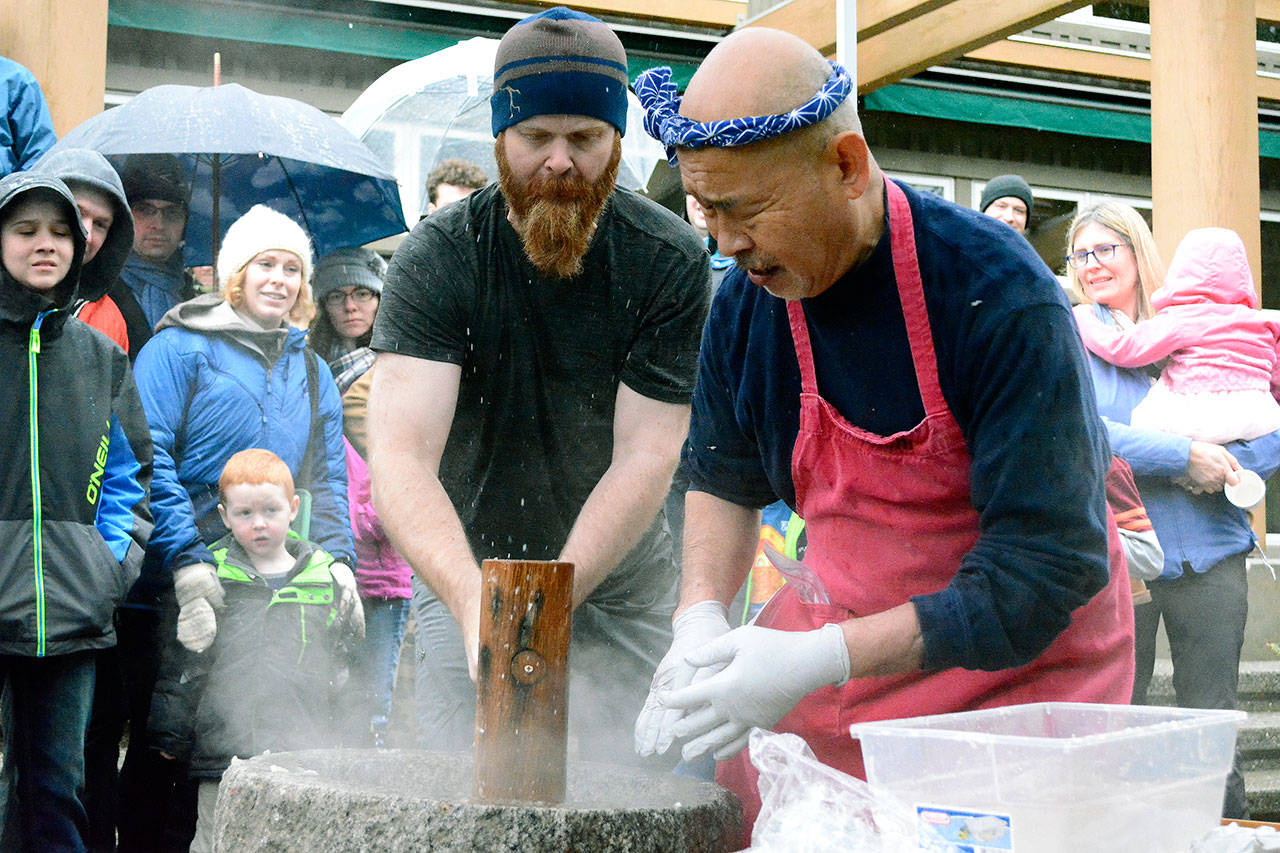BAINBRIDGE ISLAND — It’s a rainy January morning, sweet rice is being steamed over the fire and the familiar cries of Shoichi Sugiyama are coming from underneath a tent set up for pounding mochi.
“Seven! Six! Five!” Sugiyama shouts, counting down until the rice is done while a volunteer, armed with a mallet, rhythmically smashes the rice to his cadence while he moves it around the bowl.
“Four! Three! Four! Five!” Sugiyama continues as a look of disbelief comes over the face of the volunteer. He gleefully skips and repeats numbers or just counts down slowly until he finally deems the rice to be ready. And it always provokes laughter from the crowd gathered around the concrete bowl, known as an “usu,” to see how mochi is made.
This is always one of the highlights of the annual Mochi Tsuki event held by the Bainbridge Island Japanese American Community held at IslandWood on Jan. 7. Now in its 29th year, it is one of the country’s longest-running public events of its kind.
On Bainbridge Island, the event is combination of celebration and remembrance. Mochi is traditionally made for the Japanese New Year, a time for wishes of good health, wealth and happiness. The event is an opportunity for residents to learn
Rice is stacked in boxes and placed over a fire and the steam rises from a tub of water, slowly cooking the rice until it is ready to be made into mochi. Since the bottom box cooks the fastest, it is the first to be taken off the fire and placed in the usu, where it is pounded by several people at once.
While there are modern machines that can make mochi much more quickly, nothing matches the cathartic release of slamming a wooden mallet into a bowl full of dough.
And as mochi was being pounded outside, attendees were treated to pulsating drumming and chanting of Seattle Kokon Taiko, a Seattle-based taiko drum group that plays both traditional and contemporary pieces, which contributed to the lively spirit of the occasion.
Commemorating the more solemn side of the event was the historical exhibit, containing the history of Japanese-Americans being sent to internment camps during World War II. Bainbridge Island Japanese-Americans were the first to be sent away, most of whom went to Manzanar, California, though some ended up in Idaho.
At a time when the United States finds itself locked in a fierce debate over immigration and the tolerance and acceptance of refugees and immigrants from the Middle East, remembering the treatment of Japanese-Americans during World War II serves as a reminder of what can happen when prejudice reigns. Take heed from the Japanese phrase that adorns the Bainbridge Island Japanese American Exclusion Memorial — “Nidoto Nai Yoni,” which means “let it not happen again.”
“It’s not a motto about blame, guilt or shame,” Bainbridge Island Japanese American Community president Clarence Moriwaki said. “It’s a motto about hope. And it’s a call to action.”
— Mark Krulish is a reporter for Kitsap News Group. He can be reached at mkrulish@soundpublishing.com. Check back later for more photos from this event.



